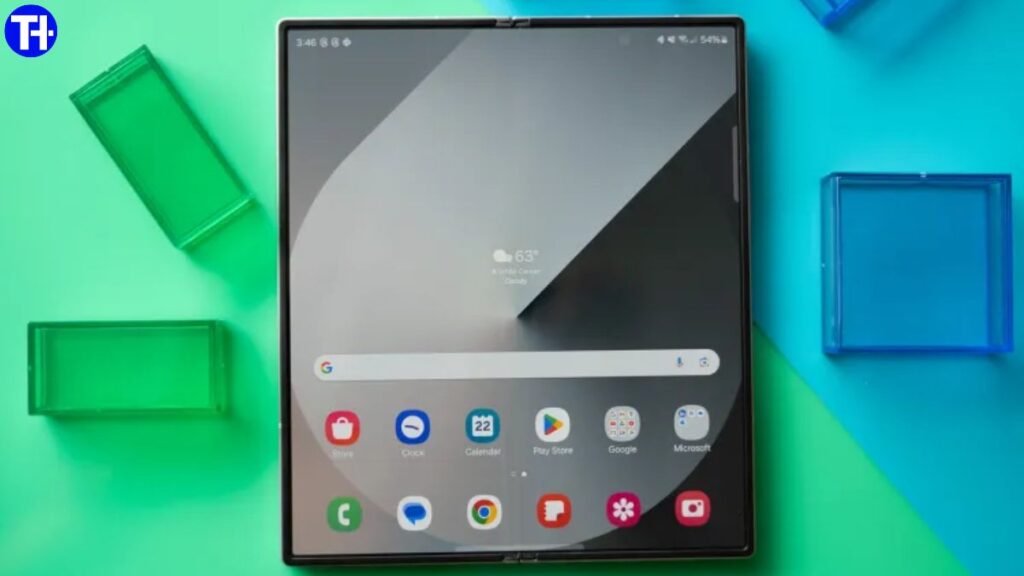Samsung is gearing up for a major reveal at its upcoming Galaxy Unpacked event on July 9, 2025, and all eyes are on its next-generation foldable smartphones. The South Korean tech giant is rumored to be launching its first Galaxy Z Fold Ultra, a move that could redefine the premium foldable phone market. But with foldables still occupying a niche corner of the smartphone industry, the big question remains: Is an Ultra foldable enough to drive mass adoption?
Foldable Phones: Curiosity Is High, But Sales Lag Behind
Over the past few years, foldable smartphones have stirred a lot of interest among tech enthusiasts and casual consumers alike. Whenever someone spots a foldable phone in public, the usual reaction is curiosity followed by hesitation — “I thought about buying one, but I went with a regular smartphone instead.”
That sentiment mirrors global sales trends. According to TrendForce, foldable smartphones accounted for just 1.5% of the global smartphone market in 2024. Despite being the pioneer in this space, Samsung has struggled to convert interest into significant sales, even after multiple iterations of its Galaxy Z Fold and Galaxy Z Flip lineups.
Why Foldables Haven’t Caught On — Yet
It’s not due to a lack of innovation. Over the past decade, Samsung has continuously pushed foldable technology, while brands like Motorola and Google joined the competition. Motorola, in particular, saw a remarkable 253% year-over-year growth in foldable shipments in 2024, driven by its affordable and stylish Razr series.
But the foldable market remains small, and the main barriers are clear:
- High prices
- Durability concerns
- Limited software optimization
- Few real advantages over traditional slab smartphones
Samsung’s 2024 foldable releases — the Galaxy Z Fold 6 and Galaxy Z Flip 6 — were criticized for being incremental updates rather than groundbreaking upgrades. Minor changes like slimmer profiles and flatter hinges weren’t enough to excite consumers.
What’s Coming at Samsung Galaxy Unpacked 2025?
Samsung seems determined to change that narrative. This year’s Galaxy Unpacked event on July 9, 2025, is expected to showcase a new generation of foldable with more meaningful improvements:
Galaxy Z Fold Ultra
Samsung is likely to unveil its first-ever “Ultra” branded foldable, aimed at competing directly with flagship models from Honor and Oppo. With a thinner design, top-tier specs, and potentially new materials for improved durability, the Galaxy Z Fold Ultra could finally offer a true no-compromise foldable experience.
Galaxy Z Flip 7
The upcoming Galaxy Z Flip 7 is rumored to feature a larger external display, similar to the Motorola Razr 40 Ultra, enhancing usability when the phone is closed. This design tweak addresses one of the most common complaints about flip-style foldables: limited functionality on the cover screen.
Galaxy Z Flip FE
In an effort to bring the foldable to a wider audience, Samsung may also launch a more affordable Galaxy Z Flip FE (Fan Edition). With a smaller screen and modest specs, this budget-friendly foldable could attract users looking to experience foldable tech without breaking the bank.
- Also Check: Vivo X200 FE Launching Soon in India: Compact Flagship With Massive Battery and Flagship Specs
Will the Ultra Branding Be Enough?
The Ultra label typically represents Samsung’s most advanced technology — just look at the Galaxy S24 Ultra. Applying that branding to the foldable series could create a new premium standard in the foldable segment. But while new features and thinner designs are welcome, key issues still linger.
Dust Resistance & Durability
One of the major drawbacks of current foldable phones is durability. Foldables are still more susceptible to dust, scratches, and hinge issues compared to standard smartphones. Despite years of R&D, Samsung has yet to deliver a fully IP68-rated foldable device, and that’s a big ask for consumers paying well over $1,000 for a phone.
Expensive Repairs
Foldable phones also tend to have higher repair costs. A cracked internal screen or a broken hinge can be costly, and warranties don’t always cover accidental damage. These risks continue to deter many potential buyers.
Apple Foldable Could Boost the Market in 2026
There is hope on the horizon for the foldable segment. Industry analysts are closely watching Apple, which is rumored to be developing its first foldable iPhone, expected in 2026. Dubbed the “iPhone Fold” or “iFold”, this launch could trigger mainstream interest and validate the foldable category in a way that even Samsung hasn’t achieved.
If Apple enters the space, it could drive higher demand across the board — benefiting not just Apple, but competitors like Samsung and Motorola as well.
Samsung’s Multi-Tier Foldable Strategy: A Smart Move?
Samsung’s 2025 strategy of launching foldables across multiple price segments — from the budget-friendly Flip FE to the high-end Fold Ultra — might finally be the approach that expands its foldable market share. This tactic has worked well for Samsung in the past with the Galaxy S and A series.
By offering:
- Improved durability
- Better cover screens
- Refined hinges
- Lower price options
Samsung could gradually shift public perception and make foldables a more viable daily driver for the average consumer.
Final Thoughts: Can Samsung Flip the Script?
The upcoming launch of the Galaxy Z Fold Ultra, along with the Galaxy Z Flip 7 and Flip FE, shows that Samsung is serious about pushing the foldable form factor forward. The addition of Ultra-level specs, refined designs, and price diversity indicates a bold move to recapture consumer interest.
But whether that will be enough to win over mainstream buyers depends on how well Samsung addresses long-standing concerns around durability, pricing, and reliability. For now, all eyes are on July 9th — when Samsung will show whether Ultra is truly enough.









